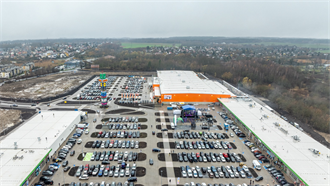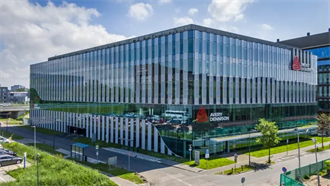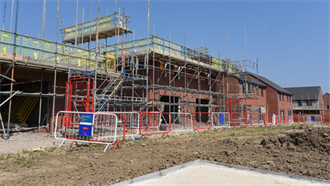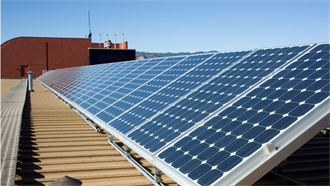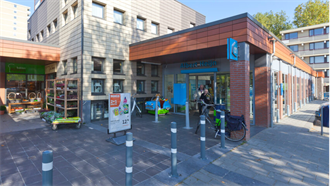With the UK prime minister pushing for a 'hard' Brexit and important elections due in France, the Netherlands, Germany and perhaps Italy, one might question why international investors are still allocating capital to European and UK commercial real estate. As Mipim 2017 opens, David Kirkby, CEO for Europe at Cromwell Property Group, casts his eye over key markets in search of possible answers.
There's clearly a lot going on in Europe this year. While last year was fairly tumultuous, 2017 promises to keep everyone equally entertained, especially on the political front.
However, for those of us who have worked through several iterations of the property investment cycle, we know that trying to predict the outcome of these events, let alone assess their impact on the economy and real estate market, is a tricky affair. You only have to compare some of the predictions made at the beginning of last year with the final outcomes to understand that.
Before forming opinions and making recommendations, we prefer to look at the facts. A survey commissioned by INREV at the beginning of this year, showed that despite a backdrop of economic and geopolitical uncertainty, investors are optimistic about the prospects for commercial real estate in Europe. Of the €52.6 bn earmarked for investment in real estate globally during 2017, around €20 bn is targeted at Europe with the UK, France and Germany expected to attract the lion's share.
Our own experiences from a recent round of investor meetings in Asia, the Middle East and North America back this view, with many investors concluding that the timing is right to invest in Europe, especially for core / core+ opportunities.
There are many reasons for this continued interest and each investor, whether they are a short-term private equity investor or a long-term liability matching pension fund, will require a tailored strategy that matches their investment horizon and return expectations. It is this requirement for diversity and liquidity that Europe can provide and will continue to provide whatever the outcome of short-term political or economic volatility.
Europe's position as the second-largest commercial real estate market in the world, comprising 32.5% (Source: RCA) of the total global real estate volume and cross-border capital accounting for around 46% (Source: RCA) of all real estate transactions isn’t going to change. Five of the top 10 and largest commercial real estate country markets by size are in Europe.
Europe is also the most heterogeneous commercial real estate market in the world, providing investors with diversity both by asset class, as well as by geography and property sector.
UK still going strong for now
We believe it’s still too early to make any firm predictions about the long-term impact of Brexit on the UK real estate market, but we are seeing increased levels of activity in certain areas. Chinese investors in particular have continued to invest in London commercial property, attracted by a combination of factors including the post-Brexit devaluation of sterling and confidence that London will ultimately retain its position in the world order. According to a recent report from Savills, Chinese investors were responsible for 96% of West End acquisitions in the first month of 2017, confident that now is a good entry point for a long-term core investment.
Infrastructure in France
Several large infrastructure projects in France will create some interesting opportunities for institutional real estate investors, especially in the regional office markets. These include the ongoing Greater Paris Project, which is a vast undertaking to strengthen Paris’ status as a 21st century metropolis, and also a planned upgrade to France’s high-speed rail network (TGV) which will reduce journey times between Paris and some of the regional cities. For example, in 2017 the office markets in Paris and Bordeaux are predicted to experience similar benefits to those already seen in the office markets in Lyon and Marseille.
Italy has caught the eye of investors
In the last 30 months, Italy has caught the attention of international investors. At a macro level, this is due to the more stable political environment and implementation of much needed structural reforms. For real estate, changes to legislation have made it easier for landlords to lease property and changes to regulation have opened up the debt market to institutions other than the traditional bank providers. While yields have tightened on traditional core assets, investors are starting to move into more core+ and value add strategies, particularly in cities like Milan.
Germany is regional diversity
Germany has an extremely diverse and liquid real estate market comprising several major cities and regions, each with its own set of characteristics that provide investors with an enormous amount of variety and choice. While Berlin is the capital and Frankfurt is the financial centre, Hamburg is a trade hub and Munich home to many tech companies. We are seeing opportunities to invest in logistics, last mile in particular, and large retail warehouse parks anchored by strong grocery or DIY tenants.
Spread between prime and secondary yields in Finland
In the Nordics there is a diverse return profile by region. For example, the core and value-add markets in Sweden are tightly priced, whereas in Finland there is a greater spread between core and secondary yields, which creates an opportunity to create core for investors. A trend towards longer lease lengths in Finland has also made it more attractive to overseas institutions.
Occupiers looking for the 'complete' package in Benelux
There are some attractive opportunities in the office sector in the Benelux region, particularly in the five core cities of Brussels, Luxembourg, Rotterdam, The Hague and Amsterdam. We have observed a polarisation in this market with some occupiers becoming focussed on micro-locations as they look for the ‘complete’ package, incorporating good access to public transport and local amenities like housing and entertainment. Finding the best locations is a key issue for many occupiers as they look to retain high quality staff.
There's more to the CEE than just Poland
There were some interesting corporate real estate transactions last year which created new, long-term opportunities for investors who hadn't previously invested in the CEE market. The arrival of large international platforms and the capital they bring is going to transform the market, especially for the retail asset class. Poland and the Czech Republic are still the main real estate investment markets in the region; however, investment in the Hungarian and Romanian markets started to pick-up in the latter part of 2016. Hungary in particular is the source of a lot of new opportunities and we have started to see yields tighten there.
Despite short-term volatility brought about by political events or fluctuations in the economic cycle, the reality for many institutional investors is that the size and depth of the European commercial real estate market will ensure it remains an important part of their overall real estate allocation. As the investment cycle evolves, they may move onto a different investment strategy, but familiarity with the European market and the diversity it provides will help to ensure it remains attractive.



























